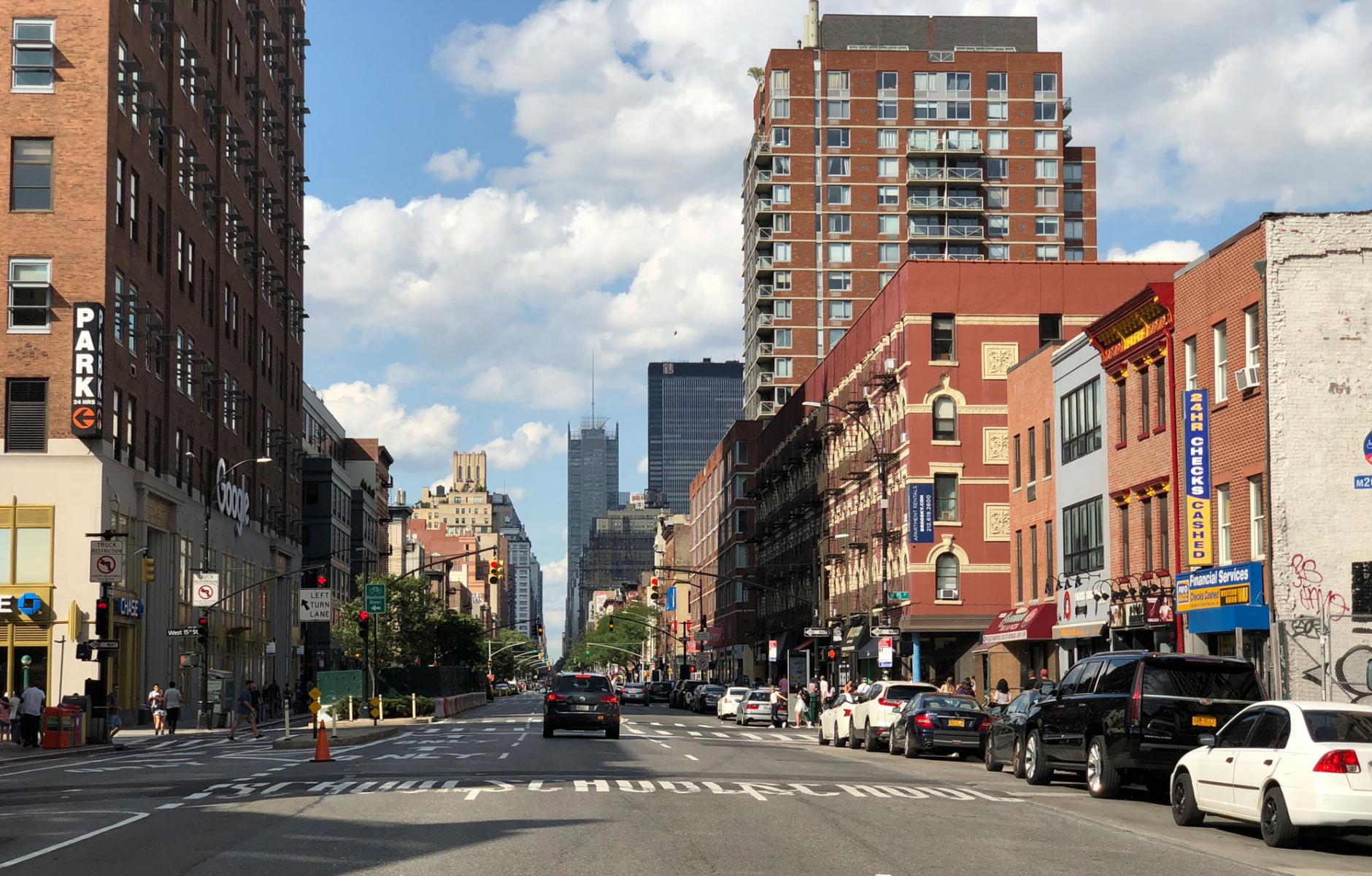
Learning from Manhattan’s urban imperfections
“New York is the perfect model of a city, not the model of a perfect city,” Lewis Mumford, 1979.
The above quote is featured on a wall in the Museum of the City of New York, which I visited on a recent trip to our most unequivocally urban city. Later, as I walked down 5th Avenue, Mumford’s keen observation got me thinking about the way the city continues to thrive despite its imperfections. Of course, New York City, and specifically Manhattan, does many things right from an urban planning perspective, including a well-connected street network, extensive transit system, grand parks and civic institutions, and a dense mixture of uses. However, it is curious to note that in at least these six ways the planning (and sometimes re-planning) of the city’s oldest borough has gone against the prevailing notions about how to make good cities. In this article, we explore a few of these planning imperfections and what we can learn from them.
It's not all stoops and storefronts!

I suspect that when most urbanists think of Manhattan Streets, they conjure images of nearly continuous storefronts bustling with commercial activity which give way to tree-lined residential streets with elegant brownstone stoops – or maybe that’s just me! But this image of a perfect mixed-use environment with continuous “activated” streetscapes is a myth. Despite a density in Manhattan of over one hundred units per acre, one still finds a surprising amount of un-activated sidewalk-level building frontages that feature walls with modest windows (or even blank walls), and narrow strips of landscaping at the building’s edge. This condition occurs even in some of the densest areas and busiest corridors. This reality check shows us that even at very high densities, there is only so much “good stuff,” i.e., ground-level retail, that can be supported by the market. However, it also shows that urban vitality can be maintained even when some frontages are less than ideal. In the end, the overall density of the city and the transit/pedestrian-oriented transportation system help to overcome shortcomings in the building frontage design.
Lesson: Despite the prevalence of un-activated frontages in Manhattan, it is still best to animate the ground floor and provide the “eyes on the street” that are so necessary for a vibrant urban community. While a retail storefront may be the preferred condition, be realistic about the commercial market and consider allowing other uses for the ground floor when retail cannot be supported by the market. Design buildings to anticipate changes in use, especially at the ground level. Regardless of the use, the blank wall at sidewalk level should be avoided at all costs!
Too many one-way streets!

The prevailing consensus among urbanists is that two-way streets are preferable to one-way streets. The reasons are many: two-way streets slow traffic by creating more friction, are more navigable and flexible, and better support storefront commercial activity. It is therefore surprising to find so many auto-centric one-way streets in a city that prides itself on its system of multimodal transportation. No doubt the city is now making great strides in reversing the auto-centric nature of Manhattan’s streets with such initiatives as the recent 14th Street busway conversion and the pedestrian retrofit of Times Square.
The preponderance of one-way streets was imposed on Manhattan as it was in many other American cities as they made way for the mid-century automobile explosion and prioritized traffic movement at the expense of the pedestrian and city inhabitants (who wants to sit at a café or open a bedroom window within twenty feet of a speeding car?). However, as shown in the images, not all one-way streets are as bad as others. A narrow residential one-way street with ample sidewalks, bike lane and on-street parking is less problematic than the multi-lane drag strip that invades Manhattan and many other cities.
Lesson: Two-way streets are preferable to one-way streets. One-way streets should only be considered as a last resort where limited right-of-way must be allocated and balanced with ample sidewalks, bike lanes and on-street parking.
Towers in the park(ing) lot

Fortunately, Le Corbusier’s idealized urban planning vision of isolated towers separated by open greenspace came along after Manhattan was largely developed. Still, those well-intentioned planners and architects did manage to sneak in quite a few “towers-in-the-parks” here and there during the urban renewal era of the 1950s and 1960s. When the resulting open space is used for its intended purpose—as a real park—it can provide a welcome respite from the continuous street wall, but only when it is surrounded by good urbanism. All too often however, the superfluous greenspace is converted to surface parking, or fenced off from public access.
Lesson: Towers-in-the-Park are a bad idea—although sometimes they accidently work when they are the exception and not the rule. Typically, this type of development fails to form a cohesive urban fabric as too much extraneous open space degrades the street wall, removes eyes from the street and too often gets repurposed for parking. Instead, it’s better to incorporate well-defined open spaces in the form of pedestrian-oriented streets, plazas, squares and parks.
Those long blocks!

To facilitate walkability, most urban planners favor smaller city blocks to improve pedestrian connectivity. Generally, this means blocks of less than four hundred feet in any one dimension with a perimeter dimension less than a quarter mile (5-minute walk). However, many city blocks in Manhattan exceed these metrics. Blame the Commissioners’ Plan of 1811 which extended the Manhattan grid up to 155th Street. In the plan, east-west blocks between 5th Avenue and 11th Avenue have block faces in the 600-ft range, topping out at about 900-ft between 5th and 6th Avenues! While the long blocks don’t seem to hinder pedestrian movement to a great deal (credit the rigid grid), my own experience is that these east-west blocks do feel uncomfortably long and monotonous.
Lesson: While some have argued that Manhattan got it just about right, most urbanists agree that smaller blocks are preferred over large, long, blocks which inhibit connectivity. As an alternative to vehicular streets, pedestrian passages can be used intermittently with vehicular streets to break up long blocks.
Let's not forget, no alleys!

This is perhaps the most obvious planning imperfection that has been pointed out many times before. Once again, the blame lies with the 1811 plan which sought to maximize real estate value. Today, city-dwellers pay the price for this planning misstep when they must step around heaps of debris and contend with delivery trucks that have nowhere else to stop but the middle of the street. One may not wish to calculate the lost real estate value had the alleys been incorporated, but it would have added to the overall quality of life, which in turn, creates its own value.
Lesson: Alleys would have increased the operating efficiency of the city and provided unobstructed, cleaner sidewalks.
Honorable mention, no parking!
The last “imperfection”—which is not an imperfection at all—reminds us of the impact that parking, and the lack of it, has on the transportation choices we make. And to clarify, it’s not that there is no parking in Manhattan, there’s just very little of it and it’s expensive and inconvenient. But, this dearth of parking has an underrated positive effect on transportation choices. I surmise that most people in Manhattan use transit not because they are die-hard urbanists and/or environmentalist, but because it is more convenient and cost-effective than any other mode, and the lack of free and cheap parking is a huge factor in that equation. This was brought home in a Weekend Update report on Saturday Night Live when anchor Michael Che said something to the effect of, “We New Yorkers don’t take public transit because we like to, we take it because we have to!”
Lesson: let’s get real about what it takes to make transit work. People will utilize transit when cities manage to tip the scales and make it more convenient than driving one’s own car. Reducing the supply of free and cheap parking is one way to tip the scales. As long as transportation by private automobile is subsidized by ever-widening thoroughfares and free parking, very few are going to opt to take the bus/streetcar/subway.
Thanks to my New York-based friends and colleagues that advised on all things Manhattan and supplied many of the photos here.




